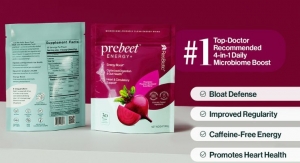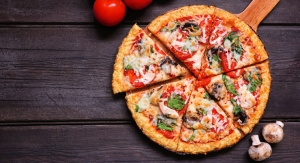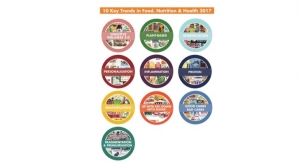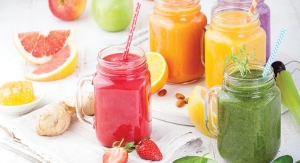Julian Mellentin, Director, New Nutrition Business11.01.16
One massive trend underpins the success of almost everything else in the healthy food and beverage market. It’s the key driver of most innovation—from plant-based products to the re-birth of full-fat dairy, the rise of green juices, blueberries, almonds, seaweed snacking and tens (perhaps hundreds) more healthy propositions. This single, most-powerful trend is consumers’ desire for foods and ingredients that are “naturally functional.”
With a natural and intrinsic health benefit, companies can convey a compelling message. Bloggers and journalists love to write about things that are naturally healthy, which creates consumer buzz and interest. When people draw their own conclusions about the benefits of a naturally functional ingredient or product, then a health claim isn’t necessary.
The strongest growth potential of a naturally functional product for 2017 and beyond lies with turmeric, which—having proven its strength in the dietary supplements aisle—is starting the transition into foods and beverages.
With 580 published human studies on its benefits (with inflammation the single-largest area of research) it isn’t surprising that this traditional culinary ingredient in curries and other Asian dishes has grabbed consumer attention. In fact, there was an 800% increase in Google searches on turmeric in the period 2014-2016. This phenomenon isn’t confined to the U.S.; the same growth in online searches on turmeric can be found in countries as diverse as Germany, Australia and Spain.
The surge in interest is fueled partly by consumers’ growing anxiety to reduce their sugar intake. When people search for information about sugar, one of the key negative health effects they discover is its role in causing inflammation. Search for foods that are protective against inflammation and turmeric usually comes close to the top of the list.
Although few foods and beverages have attempted to tap into turmeric’s popularity, that’s beginning to change. The number of products using turmeric as an ingredient doubled in both the U.S. and Europe in the period 2014-2016. A sign of growing momentum is that “turmeric-centered” startups are beginning to gain traction, such as Temple Turmeric, a beverage brand that is heading above the $10 million annual sales threshold.
Another sign of success has been growth in upscale cafes—notably in Australia’s three biggest cities—of the turmeric latte. Favored by gym-goers, this concoction consists of dairy or almond milk with a large dose of turmeric. Instant powder versions for use at home are already showing up on Australian supermarket shelves (e.g., Nature’s Harvest brand). It’s only a matter of time before the ready-to-drink (RTD) turmeric latte shows up in dairy and almond milk versions in more stores.
Powered By Plants
Yet again, 2017 looks set to be a year when strategy is powered by plants. Following the acquisition of WhiteWave Foods, Danone is now both one of the worlds’ top 10 dairy companies and also the biggest player in the global non-dairy milks market. Danone’s R&D expertise in yogurts coupled with its marketing muscle will ensure that the non-dairy yogurts and desserts market gets a big boost in 2017 and beyond.
This is not the only acquisition that shows how important a plant-food strategy has become. Coca-Cola also entered the market with the purchase of AdeS, a soy-based beverages brand, making it the number-one player in Latin America.
With these two well-resourced businesses in the market, the growth in non-dairy options that we have seen so far might just be the beginning of a much larger trend.
Among consumers, plant-based foods are capturing a bigger “share-of-mind,” fueled by the huge support the concept gets from high-profile bloggers, mainstream journalists like Michael Pollan, and also from the fact that all consumers are now considered “food explorers,” eager to try new tastes and foods.
And although more and more products use descriptors such as “vegan” or “vegetarian,” those eating styles are not the sole driver (after all, 10% of U.K. consumers describe themselves as vegetarian, but half of this group eats fish, and a quarter eat chicken). Rather, people often “feel better” if they eat less meat and sometimes only consume plant-based foods.
The biggest opportunities lie with snacking products that are explicitly plant-based, dairy-free and gluten-free, such as the many brands based on seaweed, beans, chickpeas and others.
Much of the innovation in this segment is about taking long-established plant ingredients and remaking them as something new. Here are two examples:
Protein & Broth
In the U.S., protein has evolved from simply an ingredient to being seen as a benefit in and of itself, like fiber and calcium. The protein products market is evolving in directions that no one anticipated five years ago. One of the biggest opportunities is in broth, where the Asian market shows how large this business can be.
Consumption of broth brewed from beef and chicken bones got its kick-start in the U.S. and Australia by association with the Paleo diet, but broth has since taken on a life of its own. Broth is made by slowly cooking bones so that the marrow, cartilage, gelatin, collagen, amino acids, vitamins and minerals are released into the water. Chilled for a few hours, it resembles Jell-O in the refrigerator because of the many binders broth contains.
Cooks have always considered it a key component of many dishes. But the new manifestation has foodies eating warm broth from a bowl (like drinking miso soup) and even drinking it chilled for breakfast or for a post-workout snack. As with many better-eating developments, it is on-the-go foodservice outlets that are making consumers familiar with the concept. Examples include Brodo, in New York’s East Village, which serves customized combinations of broth in to-go cups, and in Sydney the Thrive restaurant chain, which has made broth an easy lunchtime choice alongside salads and low-carb options.
Inexpensive to make and packed with vitamins, minerals and proteins, some of the benefits may include promoting strong bones and reducing joint pain and inflammation (there’s even a start-up called OsteoBroth). It may also help inhibit infection and help the gut by promoting healthy digestion.
AccelFoods, a huge and successful food-startup fund, invested in a broth brand called Nona Lim, whose founder argues that eating broth “will be part of a permanent change” in the American diet.
And why not? The West has a long history of adopting Asian dishes. A long-established market in Asia, broths are considered medicinal, boosting the immune system, enriching the blood and supporting the kidneys.
The market leader in broths in Southeast Asia is Suntory-owned Brand’s Essence of Chicken, with more than $600 million in sales. The brand is found in 19 countries, with its main market in Thailand—the largest market for Brand’s broth, with more than $175 million (€156 million) in sales—Taiwan, Singapore, Vietnam, Indonesia, Hong Kong and Malaysia.
Mostly sold in drugstores and supermarkets, and always expertly merchandised to maximize its visual impact, it is available in a range of variants, including one for digestive health, one for children and many others. The product is all-natural and free-from preservatives.
New Directions For Digestive Wellness
Digestive health offers wide appeal. For women throughout their reproductive life, and men especially after age 40, maintaining good digestive health is an everyday wellness issue. There is a particularly strong interest among seniors as well.
Companies have treated digestive wellness and the free-from markets (meaning gluten and lactose-free) separately. However, they are in fact the same market since gluten-free and dairy-free/lactose-free are both about improving digestive comfort.
When people reduce dairy or lactose, they report feeling the benefit, and “feel the benefit” is one of the most important reasons for anyone to buy a healthier product.
Companies should recognize that it’s the consumer need for digestive wellness, and the need to “feel the benefit,” that is key to success, rather than focusing on “free-from” or “probiotic.” An example is the success of A2 milk. Launched in Australia in 2004, A2 Milk is standard milk that does not contain any A1 protein, which the company claimed can cause digestive discomfort, with symptoms similar to lactose intolerance. Marketed for its digestive wellness benefit, over its 10-year life A2 has become a major success, seizing 10% of the Australian liquid milk market and growing from nothing to a business with $350 million in profitable sales. It’s the benefit that motivates the consumer much more than how they get to the benefit.
It is worth noting that many non-dairy plant milks successfully use the message of better digestive health as a way of positioning themselves against dairy. Much of the negativity that is eroding dairy in some markets arises from consumers seeking digestive wellness and associating it with dairy-free.
Kombucha drinking vinegars—on track to become a $1 billion market in the U.S.— (an embryonic category in which Coca-Cola-owned Suja is now playing), yogurts and various fruit and vegetable-based snacks (from beetroot to kale) all benefit from an association with digestive wellness.
One of the key changes that is creating opportunities for new product development is the subtle shift in the retail landscape.
1) Convenience stores are growing more powerful. The stereotype of the American convenience store is vanishing as the Millennial generation of Americans turns out to be greater users of C-stores, accounting for 12% of their food and beverage stops in 2014, compared with under 8% in 2006, according to NPD Group research. C-stores are taking much of Millennials’ “share of stomach” directly from fast-food restaurants. And they’re more likely to stop and buy food items at C-stores than any other age group. Their desire for healthier choices is quickly driving change. According to That’s It, a 100%-fruit snack bar brand, there’s been a lot more demand in C-stores for healthier products over the past two years. Fiber-fortified juice brand Juiceology described C-stores as a great opportunity. The brand finds it can get a lot of volume, especially in high-end areas where consumers are moving toward healthier grab-and-go options, and consumers are willing to pay $2.99-$3.49 for a 15-oz. drink.
2) E-commerce is creating opportunity. Direct-to-consumer e-commerce is proving to be a great way to take new ideas to consumers, to test their response to products and create a loyal customer base. One of the best examples in the U.S. is Hint Water. A no-added-sugar, fruit-flavored beverage, Hint debuted in California in 2005. However, it struggled to secure retail listings and sales were below investor expectations. This changed in 2013-2014, when Hint switched its focus to e-commerce and direct-to-consumer sales, selling both through Amazon and its own direct-to-consumer e-commerce platform. The result is 100%+ annual sales growth, taking the business to almost $100 million in sales.
What Will Win?
Fragmentation and complexity of consumer beliefs about food and health is a massive defining trend force. It’s driven in part by technology; the same force that makes it possible for smaller brands to reach consumers enables people to use their mobile devices to search for information about diet and health wherever and whenever they want, and to draw their own conclusions. It’s driven also by a loss of trust in experts, notably in the wake of the overturning of old beliefs about dietary fats.
The consequence is that people have the confidence to make highly personalized dietary choices and to experiment; we’re all food explorers now. No longer do the health-aware follow the dictates of dietary guidelines; they just do whatever they think is right for them.
As a result of this fragmentation, it’s becoming clear that there’s a niche for everything. It seems that almost anything can become successful, provided it connects to big trends like snacking, naturally functional and others. This means that, in effect, there’s no limit on what you can do.
With a natural and intrinsic health benefit, companies can convey a compelling message. Bloggers and journalists love to write about things that are naturally healthy, which creates consumer buzz and interest. When people draw their own conclusions about the benefits of a naturally functional ingredient or product, then a health claim isn’t necessary.
The strongest growth potential of a naturally functional product for 2017 and beyond lies with turmeric, which—having proven its strength in the dietary supplements aisle—is starting the transition into foods and beverages.
With 580 published human studies on its benefits (with inflammation the single-largest area of research) it isn’t surprising that this traditional culinary ingredient in curries and other Asian dishes has grabbed consumer attention. In fact, there was an 800% increase in Google searches on turmeric in the period 2014-2016. This phenomenon isn’t confined to the U.S.; the same growth in online searches on turmeric can be found in countries as diverse as Germany, Australia and Spain.
The surge in interest is fueled partly by consumers’ growing anxiety to reduce their sugar intake. When people search for information about sugar, one of the key negative health effects they discover is its role in causing inflammation. Search for foods that are protective against inflammation and turmeric usually comes close to the top of the list.
Although few foods and beverages have attempted to tap into turmeric’s popularity, that’s beginning to change. The number of products using turmeric as an ingredient doubled in both the U.S. and Europe in the period 2014-2016. A sign of growing momentum is that “turmeric-centered” startups are beginning to gain traction, such as Temple Turmeric, a beverage brand that is heading above the $10 million annual sales threshold.
Another sign of success has been growth in upscale cafes—notably in Australia’s three biggest cities—of the turmeric latte. Favored by gym-goers, this concoction consists of dairy or almond milk with a large dose of turmeric. Instant powder versions for use at home are already showing up on Australian supermarket shelves (e.g., Nature’s Harvest brand). It’s only a matter of time before the ready-to-drink (RTD) turmeric latte shows up in dairy and almond milk versions in more stores.
Powered By Plants
Yet again, 2017 looks set to be a year when strategy is powered by plants. Following the acquisition of WhiteWave Foods, Danone is now both one of the worlds’ top 10 dairy companies and also the biggest player in the global non-dairy milks market. Danone’s R&D expertise in yogurts coupled with its marketing muscle will ensure that the non-dairy yogurts and desserts market gets a big boost in 2017 and beyond.
This is not the only acquisition that shows how important a plant-food strategy has become. Coca-Cola also entered the market with the purchase of AdeS, a soy-based beverages brand, making it the number-one player in Latin America.
With these two well-resourced businesses in the market, the growth in non-dairy options that we have seen so far might just be the beginning of a much larger trend.
Among consumers, plant-based foods are capturing a bigger “share-of-mind,” fueled by the huge support the concept gets from high-profile bloggers, mainstream journalists like Michael Pollan, and also from the fact that all consumers are now considered “food explorers,” eager to try new tastes and foods.
And although more and more products use descriptors such as “vegan” or “vegetarian,” those eating styles are not the sole driver (after all, 10% of U.K. consumers describe themselves as vegetarian, but half of this group eats fish, and a quarter eat chicken). Rather, people often “feel better” if they eat less meat and sometimes only consume plant-based foods.
The biggest opportunities lie with snacking products that are explicitly plant-based, dairy-free and gluten-free, such as the many brands based on seaweed, beans, chickpeas and others.
Much of the innovation in this segment is about taking long-established plant ingredients and remaking them as something new. Here are two examples:
- Hippeas chickpea-based snacks—sold in the U.S. and U.K. in Starbucks and elsewhere—consist of a blend of chickpea flour with rice, extruded and baked to produce “puffs.” The product makes protein, fiber and total calorie claims.
- Brami Beans is re-working an Italian legume, lupini beans—eaten by the ancient Romans and still popular today in Italy—into a fresh, high-protein, plant-based snack. The New York-based startup is less than a year old and has already been picked up in 300 stores. Lupini beans have a good ratio of protein to calories (and a full range of amino acids) providing just 35 calories per serving (about 15 beans) with 4 grams of protein and 4 grams of fiber.
Protein & Broth
In the U.S., protein has evolved from simply an ingredient to being seen as a benefit in and of itself, like fiber and calcium. The protein products market is evolving in directions that no one anticipated five years ago. One of the biggest opportunities is in broth, where the Asian market shows how large this business can be.
Consumption of broth brewed from beef and chicken bones got its kick-start in the U.S. and Australia by association with the Paleo diet, but broth has since taken on a life of its own. Broth is made by slowly cooking bones so that the marrow, cartilage, gelatin, collagen, amino acids, vitamins and minerals are released into the water. Chilled for a few hours, it resembles Jell-O in the refrigerator because of the many binders broth contains.
Cooks have always considered it a key component of many dishes. But the new manifestation has foodies eating warm broth from a bowl (like drinking miso soup) and even drinking it chilled for breakfast or for a post-workout snack. As with many better-eating developments, it is on-the-go foodservice outlets that are making consumers familiar with the concept. Examples include Brodo, in New York’s East Village, which serves customized combinations of broth in to-go cups, and in Sydney the Thrive restaurant chain, which has made broth an easy lunchtime choice alongside salads and low-carb options.
Inexpensive to make and packed with vitamins, minerals and proteins, some of the benefits may include promoting strong bones and reducing joint pain and inflammation (there’s even a start-up called OsteoBroth). It may also help inhibit infection and help the gut by promoting healthy digestion.
AccelFoods, a huge and successful food-startup fund, invested in a broth brand called Nona Lim, whose founder argues that eating broth “will be part of a permanent change” in the American diet.
And why not? The West has a long history of adopting Asian dishes. A long-established market in Asia, broths are considered medicinal, boosting the immune system, enriching the blood and supporting the kidneys.
The market leader in broths in Southeast Asia is Suntory-owned Brand’s Essence of Chicken, with more than $600 million in sales. The brand is found in 19 countries, with its main market in Thailand—the largest market for Brand’s broth, with more than $175 million (€156 million) in sales—Taiwan, Singapore, Vietnam, Indonesia, Hong Kong and Malaysia.
Mostly sold in drugstores and supermarkets, and always expertly merchandised to maximize its visual impact, it is available in a range of variants, including one for digestive health, one for children and many others. The product is all-natural and free-from preservatives.
New Directions For Digestive Wellness
Digestive health offers wide appeal. For women throughout their reproductive life, and men especially after age 40, maintaining good digestive health is an everyday wellness issue. There is a particularly strong interest among seniors as well.
Companies have treated digestive wellness and the free-from markets (meaning gluten and lactose-free) separately. However, they are in fact the same market since gluten-free and dairy-free/lactose-free are both about improving digestive comfort.
When people reduce dairy or lactose, they report feeling the benefit, and “feel the benefit” is one of the most important reasons for anyone to buy a healthier product.
Companies should recognize that it’s the consumer need for digestive wellness, and the need to “feel the benefit,” that is key to success, rather than focusing on “free-from” or “probiotic.” An example is the success of A2 milk. Launched in Australia in 2004, A2 Milk is standard milk that does not contain any A1 protein, which the company claimed can cause digestive discomfort, with symptoms similar to lactose intolerance. Marketed for its digestive wellness benefit, over its 10-year life A2 has become a major success, seizing 10% of the Australian liquid milk market and growing from nothing to a business with $350 million in profitable sales. It’s the benefit that motivates the consumer much more than how they get to the benefit.
It is worth noting that many non-dairy plant milks successfully use the message of better digestive health as a way of positioning themselves against dairy. Much of the negativity that is eroding dairy in some markets arises from consumers seeking digestive wellness and associating it with dairy-free.
Kombucha drinking vinegars—on track to become a $1 billion market in the U.S.— (an embryonic category in which Coca-Cola-owned Suja is now playing), yogurts and various fruit and vegetable-based snacks (from beetroot to kale) all benefit from an association with digestive wellness.
One of the key changes that is creating opportunities for new product development is the subtle shift in the retail landscape.
1) Convenience stores are growing more powerful. The stereotype of the American convenience store is vanishing as the Millennial generation of Americans turns out to be greater users of C-stores, accounting for 12% of their food and beverage stops in 2014, compared with under 8% in 2006, according to NPD Group research. C-stores are taking much of Millennials’ “share of stomach” directly from fast-food restaurants. And they’re more likely to stop and buy food items at C-stores than any other age group. Their desire for healthier choices is quickly driving change. According to That’s It, a 100%-fruit snack bar brand, there’s been a lot more demand in C-stores for healthier products over the past two years. Fiber-fortified juice brand Juiceology described C-stores as a great opportunity. The brand finds it can get a lot of volume, especially in high-end areas where consumers are moving toward healthier grab-and-go options, and consumers are willing to pay $2.99-$3.49 for a 15-oz. drink.
2) E-commerce is creating opportunity. Direct-to-consumer e-commerce is proving to be a great way to take new ideas to consumers, to test their response to products and create a loyal customer base. One of the best examples in the U.S. is Hint Water. A no-added-sugar, fruit-flavored beverage, Hint debuted in California in 2005. However, it struggled to secure retail listings and sales were below investor expectations. This changed in 2013-2014, when Hint switched its focus to e-commerce and direct-to-consumer sales, selling both through Amazon and its own direct-to-consumer e-commerce platform. The result is 100%+ annual sales growth, taking the business to almost $100 million in sales.
What Will Win?
Fragmentation and complexity of consumer beliefs about food and health is a massive defining trend force. It’s driven in part by technology; the same force that makes it possible for smaller brands to reach consumers enables people to use their mobile devices to search for information about diet and health wherever and whenever they want, and to draw their own conclusions. It’s driven also by a loss of trust in experts, notably in the wake of the overturning of old beliefs about dietary fats.
The consequence is that people have the confidence to make highly personalized dietary choices and to experiment; we’re all food explorers now. No longer do the health-aware follow the dictates of dietary guidelines; they just do whatever they think is right for them.
As a result of this fragmentation, it’s becoming clear that there’s a niche for everything. It seems that almost anything can become successful, provided it connects to big trends like snacking, naturally functional and others. This means that, in effect, there’s no limit on what you can do.



























